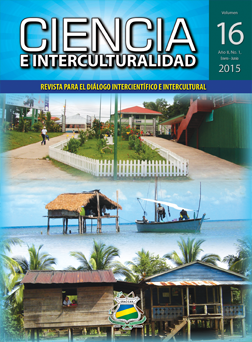CRECIMIENTO DE CEDRO REAL Y CAOBA EN EL LABORATORIO NATURAL SAN PABLO URACCAN-LAS MINAS 2009-2014
Palabras clave:
Índices de crecimiento, barrenador de las Meliáceas, calidad de la plantación, plantaciones forestales.Resumen
En esta investigación se evalúa el crecimiento de las especies de Cedro real (Cedrela odorata L) y Caoba (Swietenia macrophylla King), establecidas en el laboratorio natural San Pablo, propiedad de la Universidad de las Regiones Autónomas de la Costa Caribe Nicaragüense (URACCAN), municipio de Siuna. Encontrándose que la Caoba presenta los mejores índices de crecimiento en cuanto a altura y diámetro (altura: Incremento medio anual (IMA) 0.66, Incremento Corriente Anual (ICA) 0.60; diámetro: IMA 0.86, ICA 0.98. Mientras que el Cedro real presenta: alturas (IMA 0.40, ICA 0.34); diámetro (IMA 0.66; ICA 0.87). En conjunto las dos especies presenta los siguientes índices de crecimiento: altura: (IMA 0.53, ICA 0.47); diámetro (IMA 0.76, ICA 0.93).
De acuerdo a los resultados de afectación por el barrenador, ambas especies fueron atacadas a diferentes alturas y se encontró los mayores ataques en la Caoba cuando alcanza más de los tres metros de altura (70.97% de afectación) y en el Cedro a más de dos metros de altura (56.77% de afectación).
Con relación a la calidad de la plantación, el 5% de la plantas se encuentran en calidad mala; sin embargo el 70% se encuentra en calidad aceptable, a pesar que hay una alta afectación por la plaga se realizan prácticas de corrección del fuste (poda) para asegurar que la planta continúe con su crecimiento de la mejor manera posible.
Summary
This research was done in order to evaluate the growth of the species of Real Cedar (Cedrela odorata L) and Mahogany (Swietenia macrophylla King), established in San Pablo natural laboratory, property of the University of the Autonomous Regions of the Caribbean Coast of Nicaragua (URACCAN), municipality of Siuna. Some of the findings showed that the Mahogany presents the best growth rates in height and diameter (height: annual average increase (AAI) 0.66; annual current increase (ACI) 0.60; diameter: AAI 0.86, 0.98 ACI. While the Real Cedar presents: heights (AAI 0.40, 0.34 ACI), diameter (AAI 0.66; 0.87 ACI). Together the two species has the following growth rates: Height: (AAI 0.53, 0.47 ACI), diameter (AAI 0.76, 0.93 ACI).
According to the affectation results produced by the borer, both species were attacked at different heights and bigger attacks were found on the Mahogany when it reaches over three meters high (70.97% of affectation), while on the Real Cedar is more frequent when it reaches more than two meters high (56.77% affectation).
Regarding the quality of the plantation, 5% of the plants are in bad quality; however, 70% are in acceptable quality. Although there is a high affectation by the plague, practices of shaft correction (trimming) are performed to guarantee that the plant continues its growth in the best way possible.

